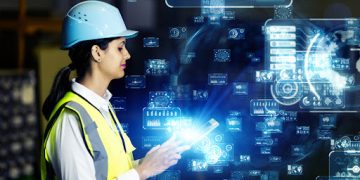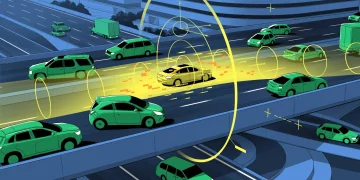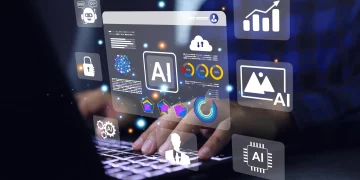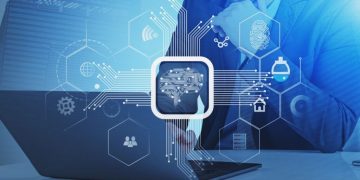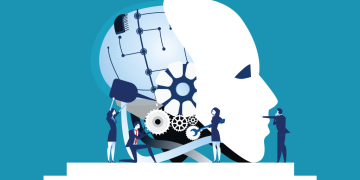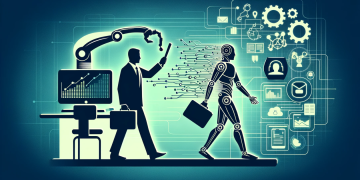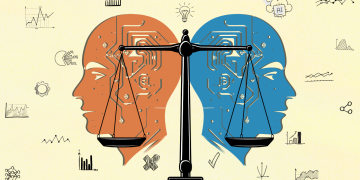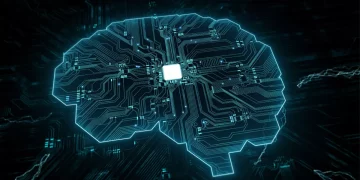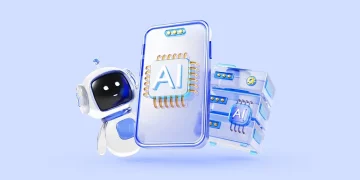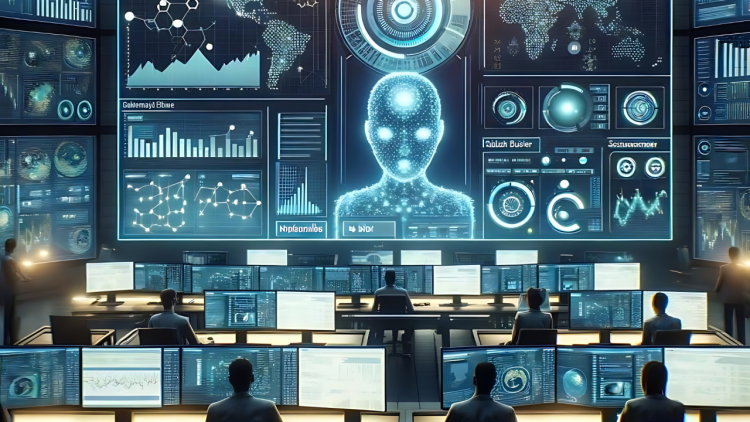As the world continues to urbanize at a rapid pace, the challenges of managing increasingly complex and dense cities have become more pronounced. From traffic congestion to energy consumption, urban areas face myriad problems that hinder their sustainability and quality of life. Enter Artificial Intelligence (AI), a transformative technology that is poised to revolutionize urban development. With the capacity to process vast amounts of data in real-time, AI offers solutions that can optimize everything from traffic flow to energy usage, making cities smarter, more efficient, and more livable.
In this article, we explore how AI is reshaping urban environments, looking at a range of applications that are enhancing urban development. We’ll delve into traffic management, energy conservation, waste management, healthcare, and public safety, with real-world case studies that demonstrate the potential of AI in creating smarter cities.
1. AI and Traffic Management: Making Transportation More Efficient
One of the most immediate applications of AI in urban development is in the management of transportation systems. Traffic congestion has long been a problem in cities around the world, contributing to air pollution, longer commute times, and overall inefficiency. AI is now being used to optimize traffic flow, reduce congestion, and enhance public transport systems.
AI-Powered Traffic Signals and Smart Routing
AI-powered traffic systems use real-time data from sensors, cameras, and GPS devices to manage traffic signals and routes dynamically. Machine learning algorithms can process this data to predict traffic patterns, adjusting traffic light cycles to optimize traffic flow and reduce congestion. These AI systems also consider variables such as weather, accidents, or roadworks, which may disrupt normal traffic patterns.
Case Study: Singapore’s Smart Traffic System
Singapore has become a global leader in AI-driven traffic management. The city-state has integrated AI into its traffic management system, using real-time data from over 200,000 sensors placed around the city to monitor traffic conditions. The AI system analyzes traffic flow patterns and adjusts traffic light timings to reduce congestion, improve traffic flow, and minimize delays. Singapore’s AI-driven traffic management has led to improved travel times, reduced fuel consumption, and enhanced air quality by cutting down on traffic jams.
AI in Autonomous Vehicles and Public Transport
AI is also transforming the way people move within cities, with the rise of autonomous vehicles and AI-enhanced public transportation systems. Self-driving cars use AI to navigate traffic, avoid accidents, and optimize routes in real-time. AI is also used to improve the efficiency of public transport systems by predicting demand and optimizing schedules.
Case Study: Waymo and Autonomous Vehicles
Waymo, a subsidiary of Alphabet Inc. (Google’s parent company), has been at the forefront of autonomous vehicle development. By leveraging AI and machine learning algorithms, Waymo’s vehicles are able to safely navigate city streets, making transportation safer and more efficient. These vehicles are equipped with sensors and cameras that detect and respond to their environment, including pedestrians, cyclists, and other vehicles. In the long run, autonomous vehicles powered by AI are expected to significantly reduce traffic congestion and improve the efficiency of urban transport systems.
2. AI and Energy Conservation: Sustainable Urban Development
As cities continue to grow, so does the demand for energy. The challenge lies in providing sustainable energy solutions that meet the needs of urban populations without contributing to environmental degradation. AI has proven to be an essential tool in optimizing energy consumption, reducing waste, and promoting sustainability in urban areas.
Smart Grids and AI in Energy Management
One of the most promising AI applications in energy conservation is the use of smart grids. AI-powered smart grids use real-time data to monitor and manage electricity distribution. By analyzing consumption patterns and predicting demand, AI can optimize energy distribution, prevent outages, and minimize energy waste.
Case Study: Barcelona’s Smart City Initiative
Barcelona is one of the world’s leading examples of a smart city. As part of its smart city initiative, the city has implemented AI-driven smart grids to optimize its energy usage. The city’s energy management system collects data from a variety of sources, such as solar panels, wind turbines, and traditional power sources, to dynamically adjust the distribution of electricity. This system ensures that energy is used efficiently, reducing waste and lowering the overall carbon footprint of the city.
AI in Building Energy Efficiency
AI is also being used to optimize energy use in buildings. Through the use of sensors and AI algorithms, buildings can monitor factors such as temperature, lighting, and HVAC systems to optimize energy consumption. AI can learn the habits of occupants and adjust energy usage accordingly, ensuring that energy is only used when needed and reducing costs.
Case Study: Google’s Smart Building Initiative
Google has integrated AI into the management of its office buildings to improve energy efficiency. By using AI to analyze data from sensors embedded in the building, Google can monitor and optimize energy consumption, including lighting, temperature, and ventilation. Google’s AI-powered system is able to learn the behavior patterns of employees and adjust settings to maximize comfort while minimizing energy usage. This has led to significant reductions in energy consumption, demonstrating how AI can play a key role in making urban buildings more sustainable.
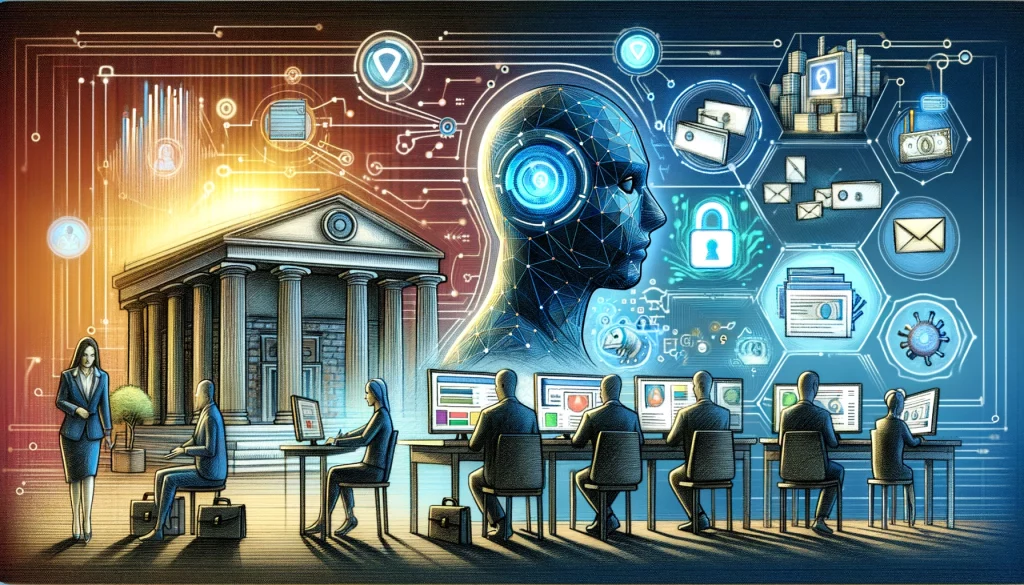
3. AI in Waste Management: Smart Solutions for Cleaner Cities
Waste management is another critical aspect of urban development that AI is helping to improve. With growing populations and increasing waste production, cities are facing unprecedented challenges in managing waste efficiently. AI is being used to optimize waste collection, recycling, and waste-to-energy solutions, helping cities reduce their environmental impact.
AI-Powered Waste Sorting and Recycling
AI-powered robots and machines are now capable of sorting waste more efficiently than human workers. These AI systems use computer vision and machine learning to distinguish between recyclable and non-recyclable materials, reducing contamination and increasing recycling rates. AI is also used to automate the sorting process, speeding up recycling and minimizing waste sent to landfills.
Case Study: The City of Helsinki’s AI Waste Management System
Helsinki, Finland, has implemented an AI-driven waste management system that utilizes machine learning to improve waste sorting. The city’s AI system uses cameras and sensors to monitor waste containers and identify the materials inside. It then sorts the waste accordingly, improving the efficiency of recycling processes and reducing the amount of waste that ends up in landfills.
AI and Waste Collection Optimization
AI is also used to optimize waste collection by analyzing data to predict when and where bins will be full. This allows waste collection trucks to follow optimized routes, reducing fuel consumption and ensuring timely waste collection.
Case Study: Smart Waste Collection in New York City
New York City has implemented an AI-powered waste collection system that monitors trash bins across the city. The system uses sensors to detect the level of waste in bins and sends this data to waste management teams, allowing them to schedule collection more efficiently. By using AI to optimize routes and reduce the number of collection trips, New York has saved on fuel costs and reduced its carbon emissions, making waste collection more sustainable.
4. AI in Public Safety: Enhancing Urban Security
As cities grow in size and complexity, ensuring public safety becomes more challenging. AI is playing a key role in enhancing urban security by improving crime prediction, surveillance, and emergency response times. By analyzing data from various sources, AI can help law enforcement agencies prevent crime, respond faster to emergencies, and improve overall public safety.
AI in Crime Prediction and Prevention
AI systems can analyze vast amounts of data from various sources, such as surveillance cameras, social media, and crime reports, to identify patterns that may indicate a potential crime. Machine learning algorithms can predict where and when crimes are most likely to occur, enabling law enforcement agencies to allocate resources more effectively and prevent criminal activities before they happen.
Case Study: Predictive Policing in Los Angeles
Los Angeles has implemented an AI-driven predictive policing system known as PredPol, which uses machine learning algorithms to predict where crimes are most likely to occur based on historical data. The system analyzes crime patterns and recommends where police should patrol to prevent criminal activity. This approach has helped law enforcement agencies deploy their resources more efficiently, reducing crime rates and enhancing public safety.
AI in Emergency Response Systems
AI is also used to improve emergency response times by analyzing real-time data and optimizing response strategies. For example, AI can analyze traffic patterns, weather conditions, and emergency call data to dispatch emergency services to the most urgent situations, reducing response times and saving lives.
Case Study: AI in Emergency Management in London
London’s emergency services have integrated AI into their operations to improve response times during emergencies. The city’s AI system uses data from traffic cameras, social media, and emergency calls to analyze the situation and prioritize responses. This system helps emergency responders navigate the city more quickly and efficiently, improving their ability to respond to critical situations in a timely manner.
5. Challenges and Ethical Considerations
While the potential of AI in urban development is vast, there are challenges and ethical considerations that must be addressed. Data privacy, security, and the potential for algorithmic bias are critical concerns that need to be managed carefully. Moreover, the integration of AI into urban infrastructure requires significant investment in technology, training, and public-private partnerships.
Conclusion: A Smarter, More Sustainable Future
AI is indeed shaping the future of urban development, offering solutions to some of the most pressing challenges faced by cities around the world. From improving traffic flow and energy efficiency to optimizing waste management and enhancing public safety, AI is helping cities become smarter, more sustainable, and more livable. However, the successful integration of AI into urban infrastructure requires careful planning, collaboration, and ethical considerations to ensure that it benefits all citizens.
As AI continues to evolve, its role in urban development will only grow, driving innovation and creating smarter cities for the future.

